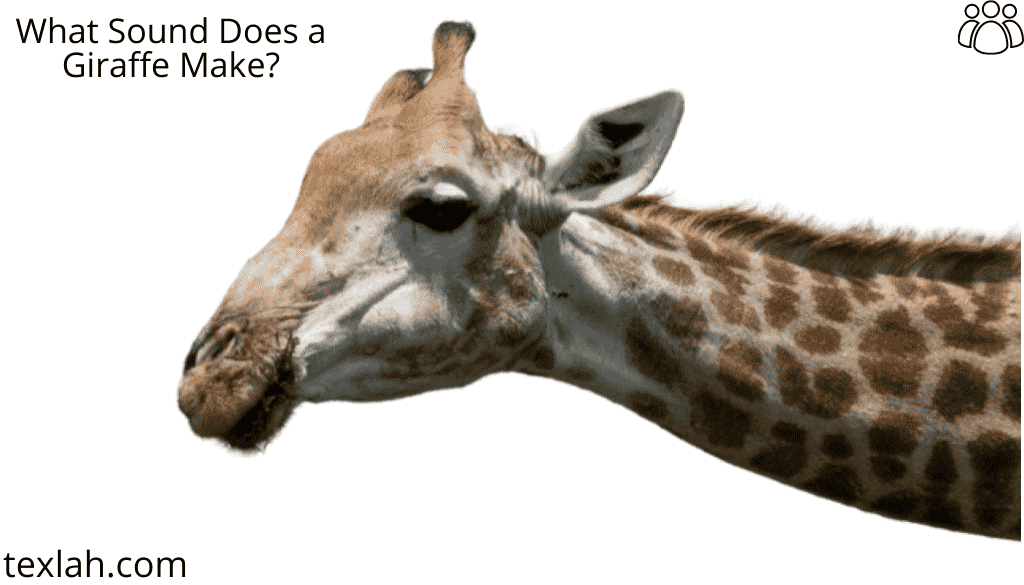Giraffes are not known for their vocalizations, but they do produce sounds. The most common sound is a low, moaning noise, akin to a deep cough or rumble. These vocalizations are typically emitted by males during mating rituals or by mothers communicating their calves. While giraffes are not as vocal as some animals, these low-frequency sounds play a crucial role in their communication and social interactions, contributing to their unique behavioral repertoire. Thus, explore What Sound Does a Giraffe Make?
Giraffes are iconic creatures of the African savannah, known for their towering height and distinctive spotted patterns. While they may seem silent compared to other animals, giraffes do indeed make sounds, although they are not as vocal as some other species.
Read More: Do Sharks Lay Eggs?
Giraffe Vocalizations
Giraffes, renowned for their graceful stature and distinctive appearance, communicate through a variety of vocalizations, albeit less frequently than other animals. While not as vocal as some species, giraffes emit low, rumbling sounds resembling deep moans or grunts. These vocalizations serve crucial roles in their social interactions, such as during mating rituals or maternal communication calves. Despite their quiet demeanor, giraffes utilize these sounds to convey information and maintain social cohesion in their herds, contributing to the rich tapestry of their behavioral repertoire.
Communication and Social Context
Giraffes engage in vocal communication in their social context, utilizing a range of sounds to convey messages and maintain social cohesion in their herds. While not as vocal as some other animals, giraffes emit low-frequency vocalizations, including deep moans and grunts, which serve various purposes in their social interactions. These vocalizations are particularly crucial during mating rituals, maternal communication calves, and establishing dominance in the herd. Despite their subtle nature, these vocal cues play a significant role in giraffe social dynamics, highlighting the importance of communication in their complex social structure.
Understanding the Giraffe’s Larynx
The giraffe’s larynx is a fascinating anatomical feature that contributes to its unique vocalizations and adaptations for its towering stature. Positioned high in the neck, near the base of the skull, the giraffe’s larynx is elongated to accommodate its long trachea and neck vertebrae. This elongation allows for the production of low-frequency sounds, characteristic of the giraffe’s vocal repertoire. Despite its elongated structure, the giraffe’s larynx functions similarly to that of other mammals, vocal folds or cords that vibrate to produce sound. However, the giraffe’s larynx is adapted to stand the considerable pressure exerted on it during the animal’s long-necked browsing behavior. This adaptation ensures that the giraffe can vocalize effectively while also maintaining the structural integrity necessary for its unique feeding habits. Overall, the giraffe’s larynx is a remarkable adaptation that facilitates both vocal communication and feeding behaviors in this iconic African species.
Cultural and Scientific Interest: What Sound Does a Giraffe Make?
The giraffe’s vocalizations have sparked both cultural fascination and scientific inquiry. In various African cultures, giraffes are revered for their majestic presence and enigmatic behaviors, including their vocalizations. Traditional beliefs often attribute symbolic meanings to giraffe sounds, associating them concepts like wisdom, strength, or communication the divine. Meanwhile, in the realm of scientific research, giraffe vocalizations remain a subject of study, shedding light on the intricacies of their social dynamics and communication patterns. Researchers use sophisticated recording equipment to capture and analyze giraffe vocalizations, seeking to decipher their meanings, functions, and potential variations across different contexts. By unraveling the mysteries of giraffe vocalizations, scientists aim to deepen our understanding of these remarkable animals’ behavior, ecology, and evolutionary history. Ultimately, the intersection of cultural reverence and scientific inquiry underscores the profound significance of giraffe vocalizations in both human society and the natural world.
Are Giraffes friendly?
Giraffes are generally peaceful and gentle creatures, known for their calm demeanor and curious nature. While they may appear aloof at times, they often display friendly behavior towards humans and other animals in their habitat. However, like any wild animal, giraffes can become defensive if they feel threatened or provoked. It’s essential to observe them from a safe distance and respect their space to ensure positive interactions.
Conclusion: What Sound Does a Giraffe Make?
In conclusion, while giraffes are not renowned for their vocal prowess, they do emit low-frequency sounds, often described as deep coughs or rumbling noises. These vocalizations play a crucial role in their communication and social interactions, particularly during mating rituals and maternal care. Despite their subtle nature, giraffe vocalizations remain an intriguing aspect of these majestic creatures’ behavior, contributing to their unique behavioral repertoire and sparking both cultural fascination and scientific inquiry.
Discover in-depth and reliable information on Texlah, your go-to platform for insightful content.

